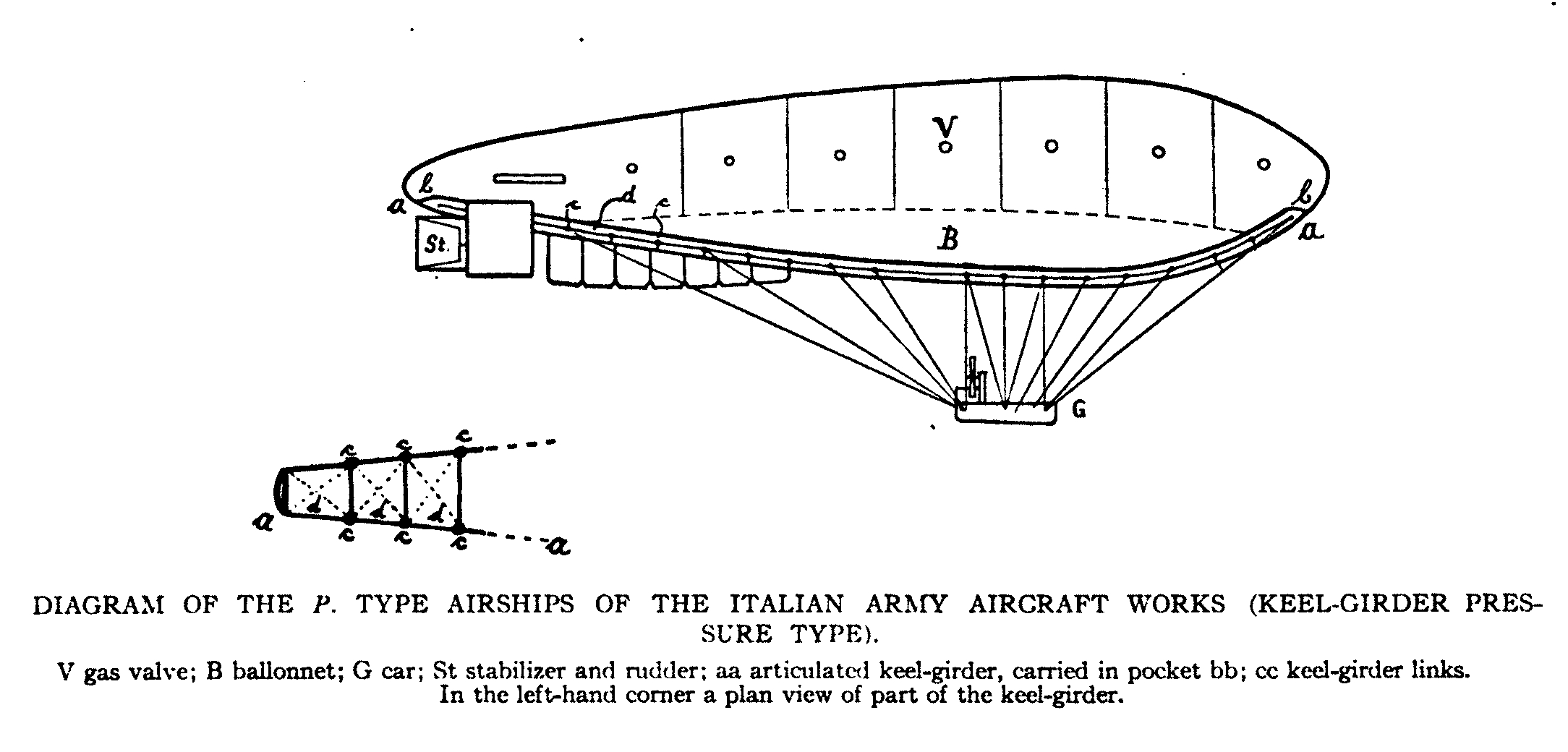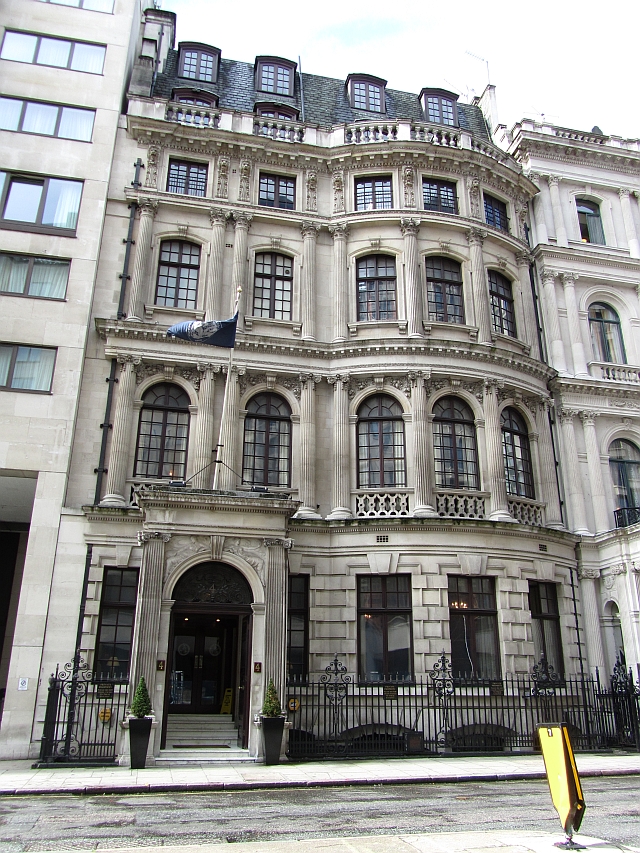|
Blimp
A blimp, or non-rigid airship, is an airship (dirigible) without an internal structural framework or a keel. Unlike semi-rigid and rigid airships (e.g. Zeppelins), blimps rely on the pressure of the lifting gas (usually helium, rather than hydrogen) inside the envelope and the strength of the envelope itself to maintain their shape. Principle Since blimps keep their shape with internal overpressure, typically the only solid parts are the passenger car (gondola) and the tail fins. A non-rigid airship that uses heated air instead of a light gas (such as helium) as a lifting medium is called a hot-air airship (sometimes there are battens near the bow, which assist with higher forces there from a mooring attachment or from the greater aerodynamic pressures there). Volume changes of the lifting gas due to temperature changes or to changes of altitude are compensated for by pumping air into internal ballonets (air bags) to maintain the overpressure. Without sufficient overpressur ... [...More Info...] [...Related Items...] OR: [Wikipedia] [Google] [Baidu] |
Airship
An airship or dirigible balloon is a type of aerostat or lighter-than-air aircraft that can navigate through the air under its own power. Aerostats gain their lift from a lifting gas that is less dense than the surrounding air. In early dirigibles, the lifting gas used was hydrogen, due to its high lifting capacity and ready availability. Helium gas has almost the same lifting capacity and is not flammable, unlike hydrogen, but is rare and relatively expensive. Significant amounts were first discovered in the United States and for a while helium was only available for airships in that country. Most airships built since the 1960s have used helium, though some have used hot air.A few airships after World War II used hydrogen. The first British airship to use helium was the ''Chitty Bang Bang'' of 1967. The envelope of an airship may form the gasbag, or it may contain a number of gas-filled cells. An airship also has engines, crew, and optionally also payload accommodation ... [...More Info...] [...Related Items...] OR: [Wikipedia] [Google] [Baidu] |
Semi-rigid Airship
A semi-rigid airship is an airship which has a stiff keel or truss supporting the main envelope along its length. The keel may be partially flexible or articulated and may be located inside or outside the main envelope. The outer shape of the airship is maintained by gas pressure, as with the non-rigid "blimp". Semi-rigid dirigibles were built in significant quantity from the late 19th century but in the late 1930s they fell out of favour along with rigid airships. No more were constructed until the semi-rigid design was revived by the Zeppelin NT in 1997. Semi-rigid construction is lighter-weight than the outer framework of a rigid airship, while it allows greater loading than a non-rigid type. Principle More or less integrally attached to the hull are the gondola, engines and sometimes the empennage (tail). The framework has the task of distributing the suspension loads of these attachments and the lifting gas loads evenly throughout the whole hull's surface and may also ... [...More Info...] [...Related Items...] OR: [Wikipedia] [Google] [Baidu] |
Thermal Airship
A thermal airship is an airship that generates buoyancy by heating air in a large chamber or airship#Envelope, envelope. The lower density of interior hot air compared to cool ambient air causes an upward force on the envelope. This is very similar to a hot air balloon, with the notable exception that an airship has a powered means of propulsion, whilst a hot air balloon relies on winds for navigation. An airship that uses steam would also qualify as a thermal airship. Other types of airships use a gas that is lighter than air at ambient temperature, such as helium, as a lifting gas. Some airship designs that use a lighter-than-air lifting gas heat a portion of the gas, which is usually maintained in enclosed cells to gain additional lift. Heating the lifting gas causes expansion of the gas in order to further lower the density of the lifting gas, which results in greater lift. Advantages and disadvantages Thermal airships have the advantage of being much less expensive than he ... [...More Info...] [...Related Items...] OR: [Wikipedia] [Google] [Baidu] |
Helium
Helium (from el, ἥλιος, helios, lit=sun) is a chemical element with the symbol He and atomic number 2. It is a colorless, odorless, tasteless, non-toxic, inert, monatomic gas and the first in the noble gas group in the periodic table. Its boiling and melting point are the lowest among all the elements. It is the second lightest and second most abundant element in the observable universe (hydrogen is the lightest and most abundant). It is present at about 24% of the total elemental mass, which is more than 12 times the mass of all the heavier elements combined. Its abundance is similar to this in both the Sun and in Jupiter, due to the very high nuclear binding energy (per nucleon) of helium-4, with respect to the next three elements after helium. This helium-4 binding energy also accounts for why it is a product of both nuclear fusion and radioactive decay. The most common isotope of helium in the universe is helium-4, the vast majority of which was formed during t ... [...More Info...] [...Related Items...] OR: [Wikipedia] [Google] [Baidu] |
Buoyancy Compensator (aviation)
The static buoyancy of airships in flight is not constant. It is therefore necessary to control the altitude of an airship by controlling its buoyancy: buoyancy compensation. Changes which have an effect on buoyancy * Changes in air temperature (and thus the density of air) * Changes in lifting gas temperature (for example, the heating of the hull by the sun). * Accumulation of additional ballast (for example, precipitation or icing on the envelope) * Changes in ballast (for example, during a flight maneuver or the dropping of ballast) * Changes in weight of fuel on board, due to fuel consumption. This was a challenge especially in the large historic airships like the Zeppelins. For example, on a flight from Friedrichshafen to Lakehurst, the rigid airship LZ 126, built in 1923-24, used 23,000 kg gasoline and 1300 kg of oil (an average consumption of 290 kg/100 km). During the landing the airship had to release approximately 24,000 cubic meters of hydrogen to ... [...More Info...] [...Related Items...] OR: [Wikipedia] [Google] [Baidu] |
Royal Navy
The Royal Navy (RN) is the United Kingdom's naval warfare force. Although warships were used by English and Scottish kings from the early medieval period, the first major maritime engagements were fought in the Hundred Years' War against France. The modern Royal Navy traces its origins to the early 16th century; the oldest of the UK's armed services, it is consequently known as the Senior Service. From the middle decades of the 17th century, and through the 18th century, the Royal Navy vied with the Dutch Navy and later with the French Navy for maritime supremacy. From the mid 18th century, it was the world's most powerful navy until the Second World War. The Royal Navy played a key part in establishing and defending the British Empire, and four Imperial fortress colonies and a string of imperial bases and coaling stations secured the Royal Navy's ability to assert naval superiority globally. Owing to this historical prominence, it is common, even among non-Britons, to ref ... [...More Info...] [...Related Items...] OR: [Wikipedia] [Google] [Baidu] |
RNAS Capel
RNAS Capel (later RAF Folkestone) was a First World War airship station near Folkestone, Kent. History When Germany declared in February 1915 that it would commence unrestricted submarine warfare the Royal Navy responded with the building of airship stations around the coast. Being close to the Dover Straits the open fields east of Capel-le-Ferne were seen as ideal location for a base and work began in April 1915. Although not entirely completed, the base was officially opened on 8 May 1915, under the command of Lt. A.D. Cunningham. The first airship for Capel was to have been SS-1 the first of a new sea scout class of non-rigid airships, on delivery to Capel from RNAS Kingsnorth on 7 May it hit telegraph wires and was destroyed. Despite the accident more sea scouts were soon delivered to Capel. Airship production Following the successful repair to SS-10 at Capel production of the airships moved from Kingsnorth to Capel, although by 1916 production had moved again to Vickers at ... [...More Info...] [...Related Items...] OR: [Wikipedia] [Google] [Baidu] |
Onomatopoeia
Onomatopoeia is the process of creating a word that phonetically imitates, resembles, or suggests the sound that it describes. Such a word itself is also called an onomatopoeia. Common onomatopoeias include animal noises such as ''oink'', ''meow'' (or ''miaow''), ''roar'', and ''chirp''. Onomatopoeia can differ between languages: it conforms to some extent to the broader linguistic system; hence the sound of a clock may be expressed as ''tick tock'' in English, in Spanish and Italian (shown in the picture), in Mandarin, in Japanese, or in Hindi. The English term comes from the Ancient Greek compound ''onomatopoeia'', 'name-making', composed of ''onomato''- 'name' and -''poeia'' 'making'. Thus, words that imitate sounds can be said to be onomatopoeic or onomatopoetic. Uses In the case of a frog croaking, the spelling may vary because different frog species around the world make different sounds: Ancient Greek (only in Aristophanes' comic play ''The Frogs'') probably ... [...More Info...] [...Related Items...] OR: [Wikipedia] [Google] [Baidu] |
Balloon
A balloon is a flexible bag that can be inflated with a gas, such as helium, hydrogen, nitrous oxide, oxygen, and air. For special tasks, balloons can be filled with smoke, liquid water, granular media (e.g. sand, flour or rice), or light sources. Modern day balloons are made from materials such as rubber, latex, polychloroprene, or a nylon fabric, and can come in many different colors. Some early balloons were made of dried animal bladders, such as the pig bladder. Some balloons are used for decorative purposes or entertaining purposes, while others are used for practical purposes such as meteorology, medical treatment, military defense, or transportation. A balloon's properties, including its low density and low cost, have led to a wide range of applications. The rubber balloon was invented by Michael Faraday in 1824, during experiments with various gases. He invented them for use in the lab. Applications Play Decoration Balloons are used for decorating birthday par ... [...More Info...] [...Related Items...] OR: [Wikipedia] [Google] [Baidu] |
Royal Aeronautical Society
The Royal Aeronautical Society, also known as the RAeS, is a British multi-disciplinary professional institution dedicated to the global aerospace community. Founded in 1866, it is the oldest aeronautical society in the world. Members, Fellows, and Companions of the society can use the post-nominal letters MRAeS, FRAeS, or CRAeS, respectively. Function The objectives of The Royal Aeronautical Society include: to support and maintain high professional standards in aerospace disciplines; to provide a unique source of specialist information and a local forum for the exchange of ideas; and to exert influence in the interests of aerospace in the public and industrial arenas, including universities. The Royal Aeronautical Society is a worldwide society with an international network of 67 branches. Many practitioners of aerospace disciplines use the Society's designatory post-nominals such aFRAeS CRAeS, MRAeS, AMRAeS, and ARAeS (incorporating the former graduate grade, GradRAeS). ... [...More Info...] [...Related Items...] OR: [Wikipedia] [Google] [Baidu] |





